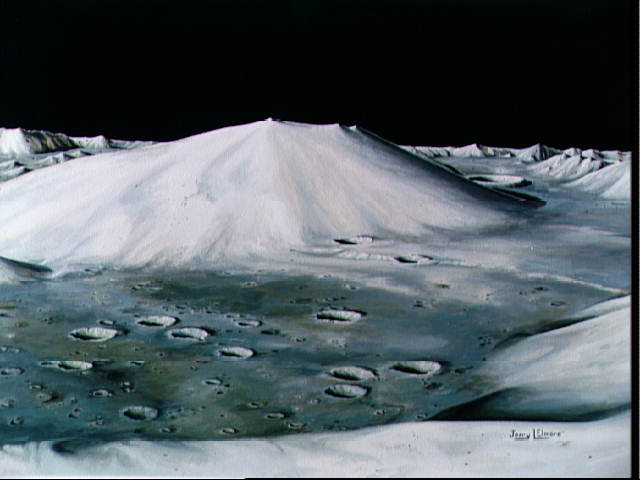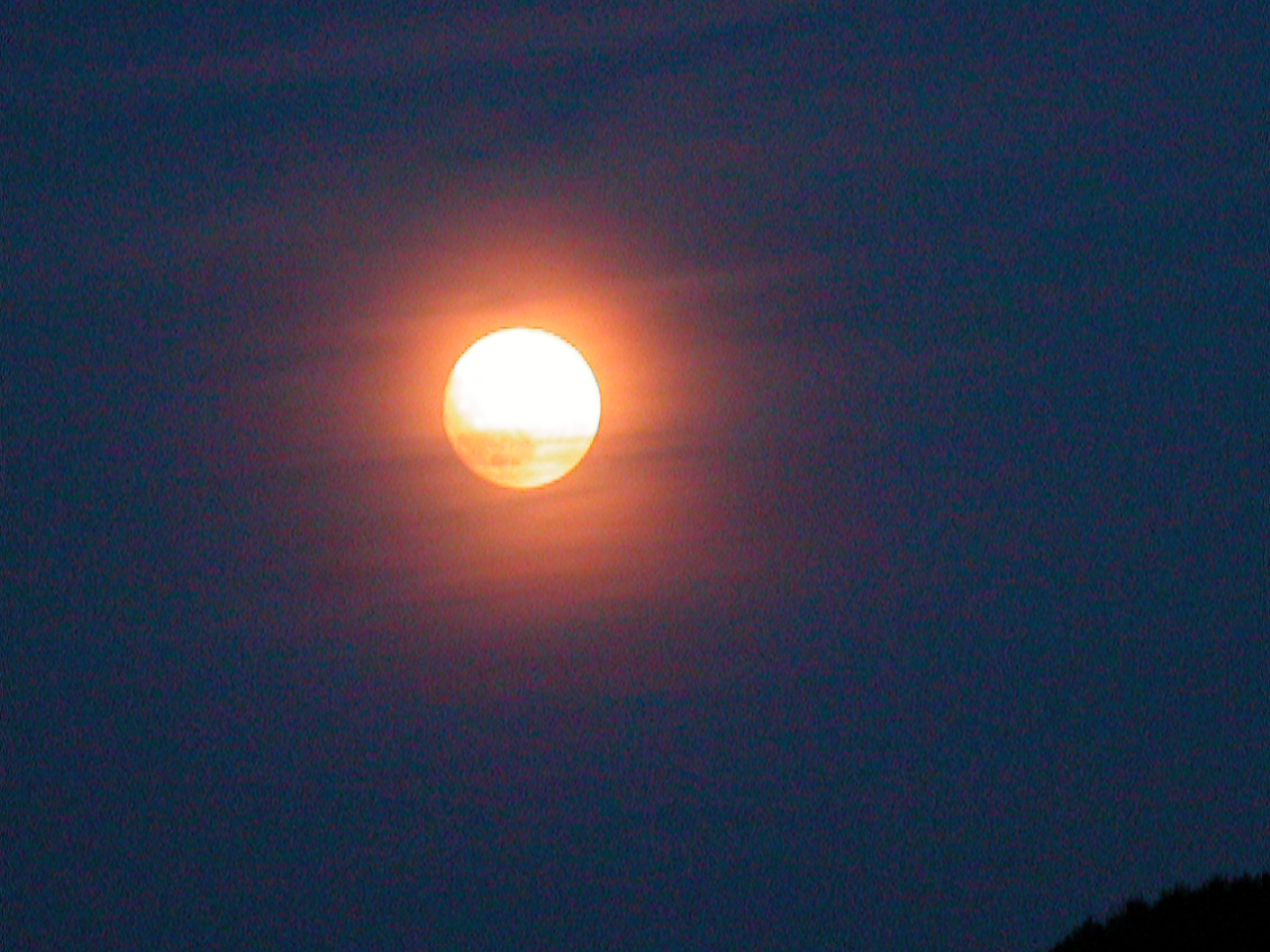The moon is the only natural satellite orbiting the Earth. It is the fifth largest and the second densest moon in the solar system. It is the brightest celestial object in the night sky.
The moon rotates on its axis in such a way that one side of the moon always faces the Earth. This is called synchronous rotation. It reaches its furthest distance from the Earth at about 253,440 miles (405,400 kilometers) and its closest point to the Earth at about 226,600 miles (362,600 kilometers. The moon orbits the Earth every 27 days 7 hours 43 minutes 11.5 seconds. This 27 and a fraction of a day orbital period is the the sidereal period of the moon's orbit. However, as viewed from the Earth, this orbital period (called its synodal period) appears to be 29 days 12 hours 44 minutes 2.9 seconds. Because the moon's synodal orbital period is about 29.5 days long, Islamic and Hebrew lunar calendars have been based on a 29 and a half day month so that calendar months alternate between 29 days and 30 days in length.
The moon's gravity is about 16.54% of the Earth's. A 180 pound man would weigh approximately 30 pounds on the moon. A 120 pound woman would weigh a little less than 20 pounds there.
Between 1969 and 1972, there have been 6 manned lunar landings on the moon. The first man to walk on the moon was Neil Armstrong. After setting foot on the moon, he said those famous words, "A small step for a man, a giant leap for mankind." Future manned missions to the moon involved carrying a lunar rover which allowed astronauts to explore the moon in a vehicle. Astronauts have brought back several soil and rock samples for scientific study.
The equatorial diameter of the moon is about 1086 miles (1738.1 kilometers). The polar diameter is about 1085 miles (1736 kilometers). The moon's magnetic field is very weak and is therefore, unable to shield the surface from solar radiation.
The moon possesses virtually no atmosphere. Some gases, such as argon, potassium, sodium, neon, and hydrogen have been detected. Small amounts of water vapor have been detected, too. The gases are formed from ions of solar wind striking the surface. Due to the moon's weak gravity and lack of a strong magnetic field, most of these gases escape into space. Some gases return the the moon's soil. Temperatures on the surface range from -413 ºF (ºC) to 243 ºF (117 ºC).
The moon's gravity is responsible for creating the ocean tides that we can see at the beach. The moon's size and distance from the earth are enough to create occasional solar eclipses by obscuring light from the sun as it passes between the Earth and the sun.


